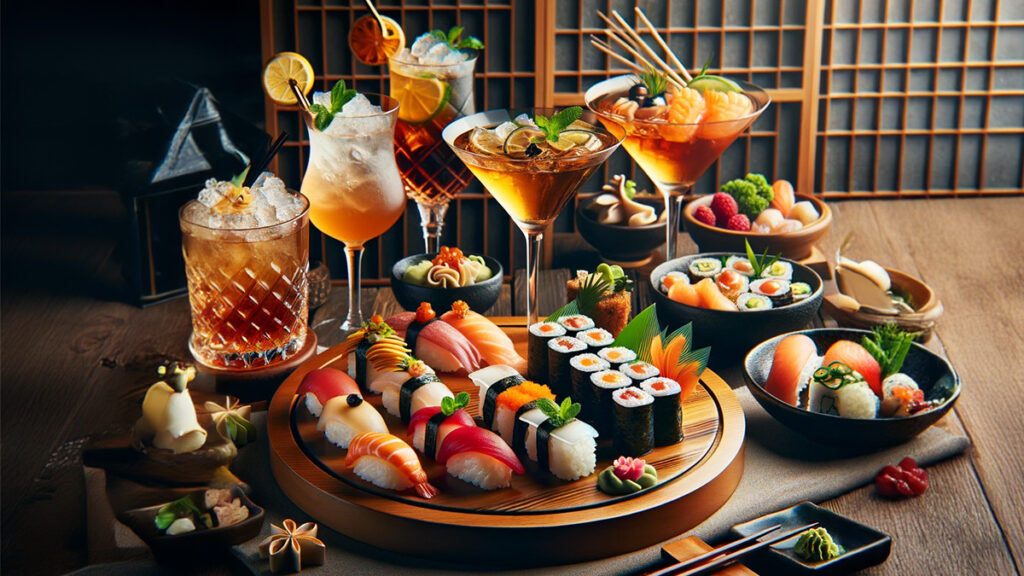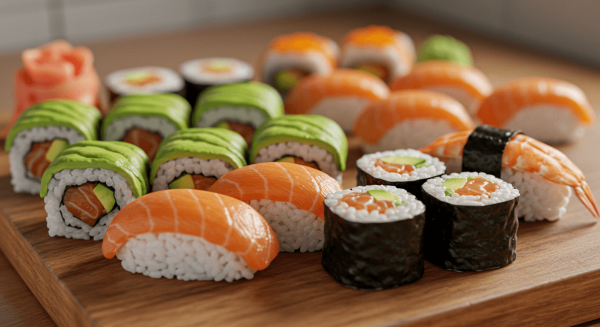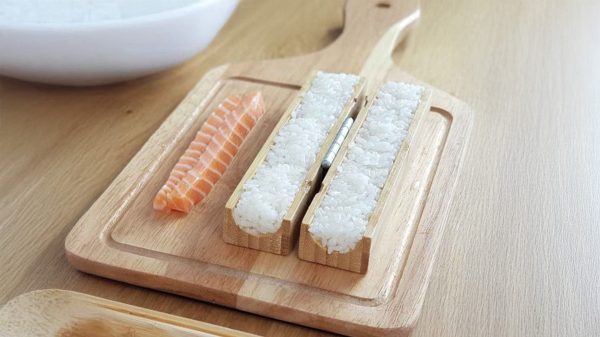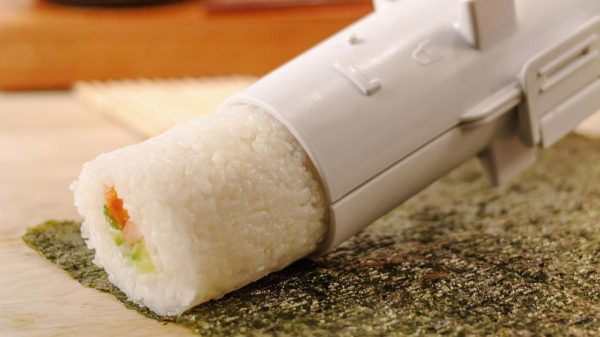When sushi preparation meets bar excellence

Culinary art and mixology are two worlds where know-how, creativity and precision are essential. In a ballet of flavors, textures and aromas, sushi chefs and mixologists transform their workspaces into true scenes of artistic expression. This convergence of culinary arts and mixology creates unique sensory experiences that delight foodies around the world.
1 – The elegance of simplicity in the art of sushi
Preparing sushi is an art form that emphasizes purity and simplicity. Far from simple, this cuisine requires in-depth understanding and meticulous attention to detail. The sushi chef must master the delicate balance between rice, fish, and seasonings. Every element must be perfect, every bite a celebration of natural flavors. The quality of the ingredients is essential, and the freshness of the fish is an art in itself. Sushi chefs meticulously select their products, often early in the morning, to guarantee the best possible quality.
2 – Precision techniques and tools
Precision is just as crucial in sushi cutting and shaping techniques. The use of extremely sharp knives, specially designed for cutting fish, is essential. These instruments, when handled skillfully, help preserve the integrity and texture of the ingredients, ensuring that each piece is visually appealing and pleasant in the mouth.
2.1 – The art of cutting
The Yanagiba is often used for cutting sashimi, with its long, thin blade allowing you to make perfectly clean and smooth slices. The Deba is thicker and heavier, ideal for cutting and deboning larger fish. Finally, the Usuba is used to cut vegetables, its wide and straight blade allows you to make precise and delicate cuts.
Each stab is calculated, aiming not only to preserve the texture and freshness of the fish but also to maximize the aesthetics of each slice. This precision directly impacts the presentation and taste perception, because inappropriate cutting can alter the texture and taste of the ingredients.
2.2 – Preparing the rice
Sushi rice should be prepared with a precise balance between stickiness and firmness. The rice is washed several times until the water runs clear to remove excess starch, which prevents the grains from becoming too sticky. After washing, the rice is cooked in a precise measure of water and then mixed with a specially prepared sweet and savory vinegar. The mixture should be done while the rice is still hot to better absorb the flavors.
The temperature at which the rice is cooled and handled is also crucial. Chefs do this in a large hangiri (wooden bowl), fanning the rice while gently tossing it with the vinegar to achieve the ideal shine and consistency without crushing the grains.
2.3 – The molding technique
Once the rice is ready, the molding of the nigiri must be done with equal precision. The chef grabs a small amount of rice, pressing it firmly but gently between the palms to form the base of the nigiri. The pressure should be enough so that the rice holds together, but not so much that it makes the rice mushy. Then, a thin slice of fish is placed on top of the rice, sometimes with a touch of wasabi in between.
This step requires not only great manual skill but also constant evaluation of the texture and temperature of the ingredients. The best sushi chefs can adjust their technique based on ambient temperature and humidity, factors that can influence the final consistency of sushi.
3 – Parallel with mixology
At the same time, modern mixology is fertile ground for creativity. Mixologists, like sushi chefs, are flavor artists. They leverage a wide range of techniques and tools to create cocktails that are works of liquid art. The balance of flavors, presentation, and even the temperature of each cocktail are meticulously controlled to ensure an exceptional experience.
Cocktails, with their complex layerings of flavors and often spectacular presentations, are the result of refined techniques, the judicious use of quality ingredients andbar accessories necessary for each creation to meet the highest expectations, just as the instruments of sushi chefs are for their culinary creations.
So a well-made cocktail can elevate the sushi-tasting experience, complementing or contrasting harmoniously with the delicate flavors of fish and rice.
4 – Innovation in tradition
In the world of sushi, innovation often manifests itself in the way traditions are interpreted and adapted to local tastes and new culinary trends. This adaptability parallels the constant evolution of cocktails, where classics are reinvented with new ingredients and techniques.
5 – A Bridge between Cultures
This fusion of traditional and modern practices in sushi and mixology is not only a bridge between two culinary disciplines, but also between cultures. It reflects an increasingly connected world, where traditional Japanese methods meet Western innovation.
Conclusion
The convergence of sushi preparation and mixology is more than a trend: it is a natural evolution of the culinary art. Valuing both tradition and innovation, this fusion of disciplines offers an enriched, sophisticated and deeply satisfying dining experience for lovers of fine cuisine and exquisite cocktails.



